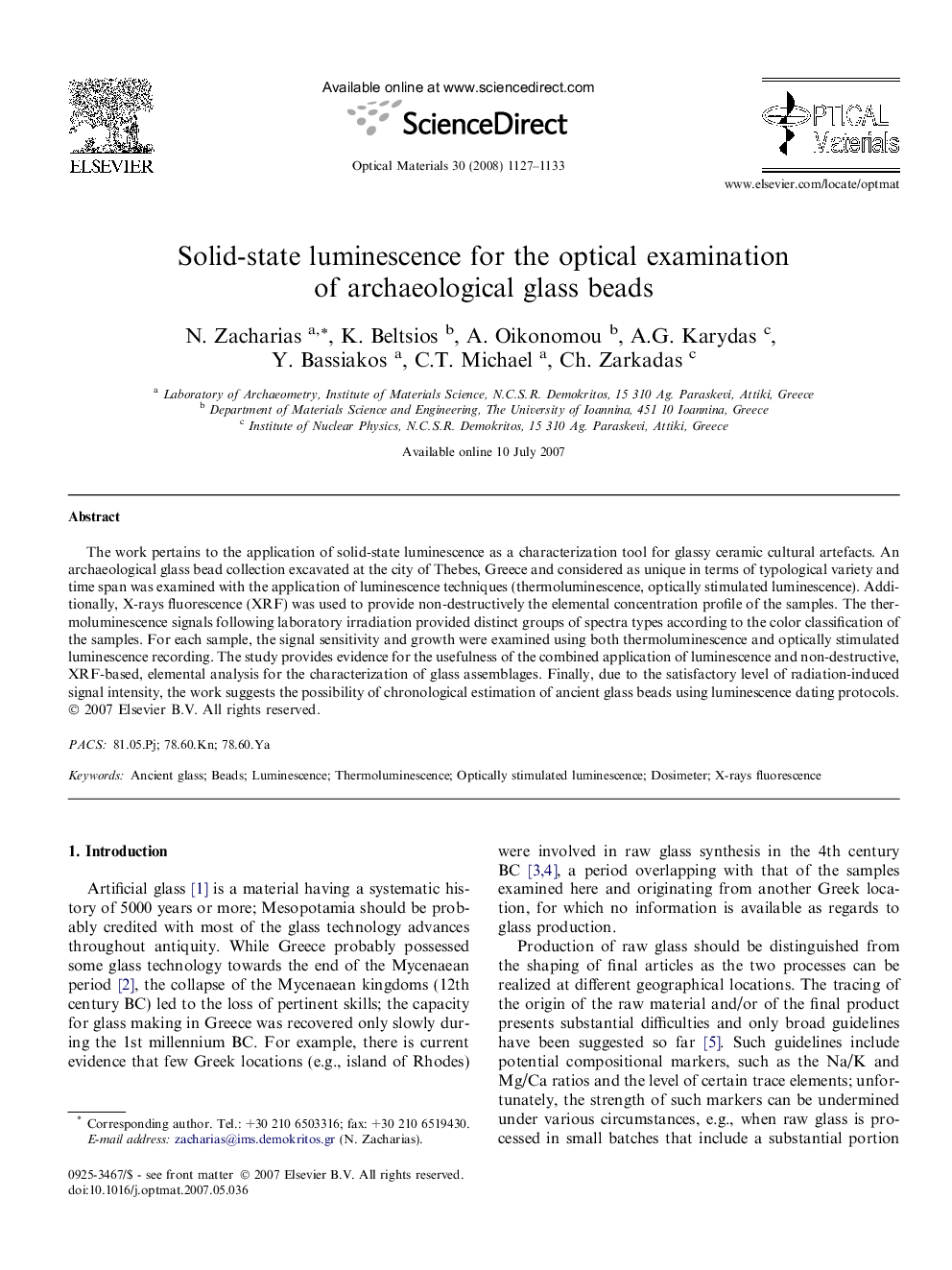| Article ID | Journal | Published Year | Pages | File Type |
|---|---|---|---|---|
| 1497332 | Optical Materials | 2008 | 7 Pages |
The work pertains to the application of solid-state luminescence as a characterization tool for glassy ceramic cultural artefacts. An archaeological glass bead collection excavated at the city of Thebes, Greece and considered as unique in terms of typological variety and time span was examined with the application of luminescence techniques (thermoluminescence, optically stimulated luminescence). Additionally, X-rays fluorescence (XRF) was used to provide non-destructively the elemental concentration profile of the samples. The thermoluminescence signals following laboratory irradiation provided distinct groups of spectra types according to the color classification of the samples. For each sample, the signal sensitivity and growth were examined using both thermoluminescence and optically stimulated luminescence recording. The study provides evidence for the usefulness of the combined application of luminescence and non-destructive, XRF-based, elemental analysis for the characterization of glass assemblages. Finally, due to the satisfactory level of radiation-induced signal intensity, the work suggests the possibility of chronological estimation of ancient glass beads using luminescence dating protocols.
